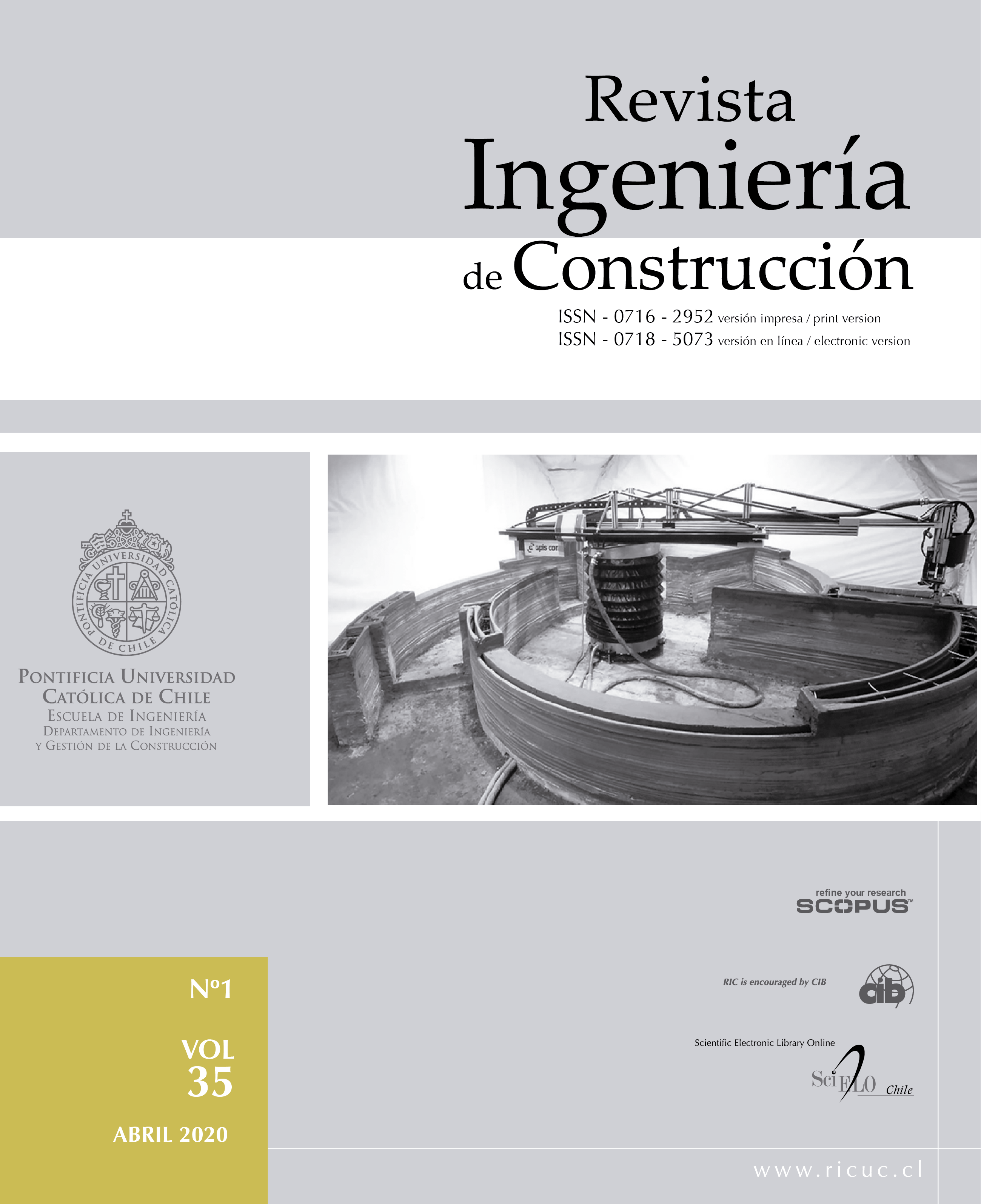Stability assessment around a railway tunnel using terrestrial laser scanner data and finite element analysis
DOI:
https://doi.org/10.4067/S0718-50732020000100021Keywords:
Tunnel, TLS, FEM, DFNsAbstract
Geotechnical analysis of tunnels in complex geo-structural environments requires an advanced understanding of the inter-block structure effect on rock mass behavior, such as joints and fractures systems, bedding and foliation planes, among other discontinuity types. The conventional approach for preliminary geotechnical analysis of tunnels is based on a continuous-equivalent system representation of rock mass, i.e. without explicit consideration of systematic discontinuity systems. However, to obtain a closer to reality results of the rock mass expected behavior, geo-structural data should be included from the initial stage of geotechnical analysis. A case study is used to analyze the implications of the discontinuity systems inclusion on the rock mass stability around tunnel. Two-dimensional finite element numerical models were developed using three different models to the generation of rock discontinuity systems. The obtained results show that fracture intensity parameter help to generated more realistic two-dimensional DFNs.


